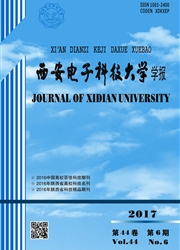

 中文摘要:
中文摘要:
针对暗通道优先理论存在的局限性,假设雾浓度局部恒定且暗通道优先的有效性随景深递增呈指数衰减,通过超像素分割得到景深和雾浓度恒定的小区域;在每个区域内计算黄金暗通道,由此生成的透射率在超像素内保持不变且更加精细、准确,能有效抑制景深突变处的光晕效应;同时采用迭代策略逐步降低雾的整体浓度,使每次迭代后的雾残留量符合黄金分割率;并进一步利用黄金分割率简化容差取值,纠正景深无限远处的偏色问题.实验结果表明,该算法能有效提高图像可见度,在雾浓度较大时性能显著.
 英文摘要:
英文摘要:
Fog and haze can cause serious image degradation. In the light of the limitations of dark channel theory, the fog concentration is supposed to be constant locally, and the effectiveness of dark channel prior decays exponentially as the depth increases. Based on this, we propose a superpixels-based golden dark channel algorithm for single image fog removal. Small regions are obtained by superpixels in which the fog concentration and the depth remain constant. The golden dark channel is computed in these regions. The resulting transmittance remains constant and is finer and more precise. This method can suppress the "Halo effect" which occurs in depth mutation. Moreover, An iterative strategy is employed to gradually reduce the overall density of fog, making the residual amount of fog satisfy the golden section after each iteration. Further, the golden section is used to simplify the tolerance value and deal with the color cast problems in the sky region where the depth is infinity. Experimental results show that the algorithm can effectively improve the image of visibility, and performs even better when the fog concentration is greater.
 同期刊论文项目
同期刊论文项目
 同项目期刊论文
同项目期刊论文
 期刊信息
期刊信息
